Permaculture raised beds are an ideal way to grow vegetables, herbs, and flowers in an environmentally friendly and sustainable manner. This type of gardening is based on permaculture principles, emphasizing working with nature instead of against it.
You can quickly build permaculture-raised beds with organic materials such as wood, stone, or recycled plastic. In this article, we look into the overview of what permaculture raised beds offer and how you can use them in your garden!
Why Permaculture Is Good for Raised Beds
Permaculture is an excellent choice for raised beds because it focuses on creating sustainable, self-sustaining gardens that require minimal maintenance. You can design Permaculture gardens to maximize efficiency and productivity while using fewer resources. They rely heavily on companion planting and beneficial insects, which can help create a healthy ecosystem in the raised bed.
Additionally, permaculture encourages using organic methods such as composting and mulching, reducing weeds and pests, and improving soil health. Lastly, permaculture gardens are aesthetically pleasing and functional, making them an attractive addition to any landscape.
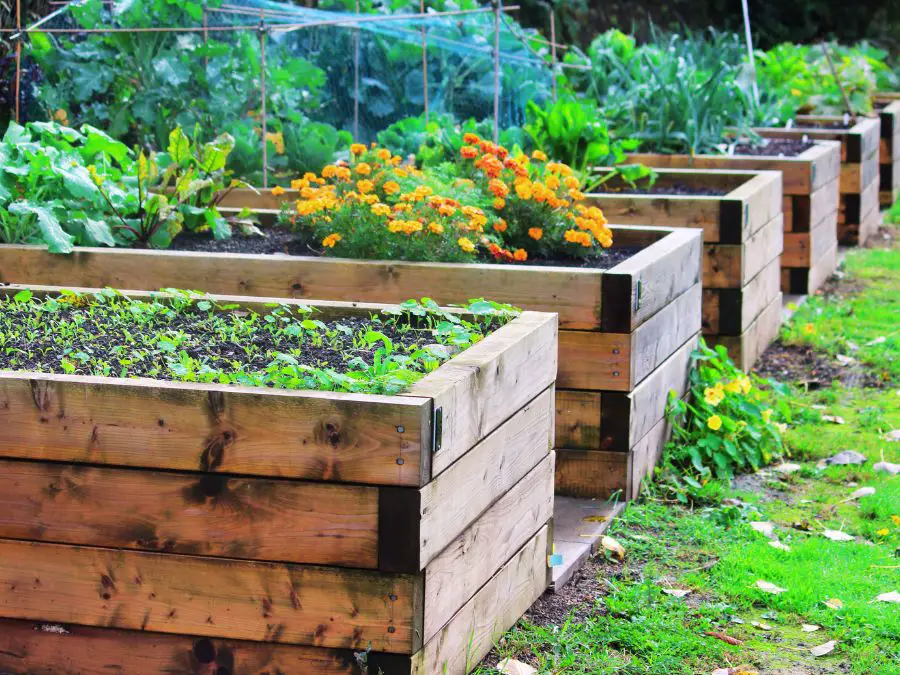
Easy Ways to Set up Reliable Raised Beds
Figure out the measurement of your desired beds. Ensure that you have easy access to the center of the beds by keeping them no wider than 48 inches (120 centimeters). The length of the beds can be as long as desired.
Set the beds up from east to west. This ensures that all the plants in the bed get an exact amount of light.
Dig the area twice. Double-dig the ground to a depth of 16 inches if you have not used the soil for gardening. If you see any roots developing under your beds, you should remove them. The bed may be put up more quickly if a mound of earth is left in the middle. As an alternative to digging, you can mow the growing area and then cover it with newspaper or cardboard.
Construct or build the beds. Constructing or building beds is easy:
- Gather all the necessary materials. These can include wood, screws, nails, and tools such as a saw and hammer.
- Measure out the bed dimensions and cut the wood to size.
- Assemble the bed frame by connecting the pieces with nails or screws.
- Add any additional features, such as headboards or footboards.
Take note of using high-quality timber and enforcing the corners.
Distribute soil evenly. After incorporating any desired soil amendments and watering the bed, use a rake to level the soil. Once the bed is prepared, it’s ready for planting. A recommended soil composition mix is 50% garden soil and 50% compost.
Add pathways between beds. Create paths between the beds, about 24 inches/60 centimeters wide. Cover the walkways between beds with a weed barrier and a 2 to a 3-inch thick layer of bark, sawdust, or gravel. Or lay sod.
Don’t step on the beds. Make it a rule never to walk on the bed, especially once you’ve added the soil and planted the plants. Stepping on the bed will cause the soil to get compacted, decrease airflow, and affect root development.
Benefits of Permaculture Raised Beds
1. Offers Superior Soil
To begin, you will have more control over the soil when you use raised beds. If you struggle with clay soil or if your garden has ever been affected by a disease that originated in the soil, raised beds may help you achieve the ideal soil conditions.
You have complete control over the composition and organization of the soil inside the confines of the bed, creating an atmosphere that is optimal for the growth of your plants. To maintain fertile and healthy soil, it is practical to test the soil at the beginning of each growing season and then amend it with the appropriate amount of compost and any nutrients lacking.
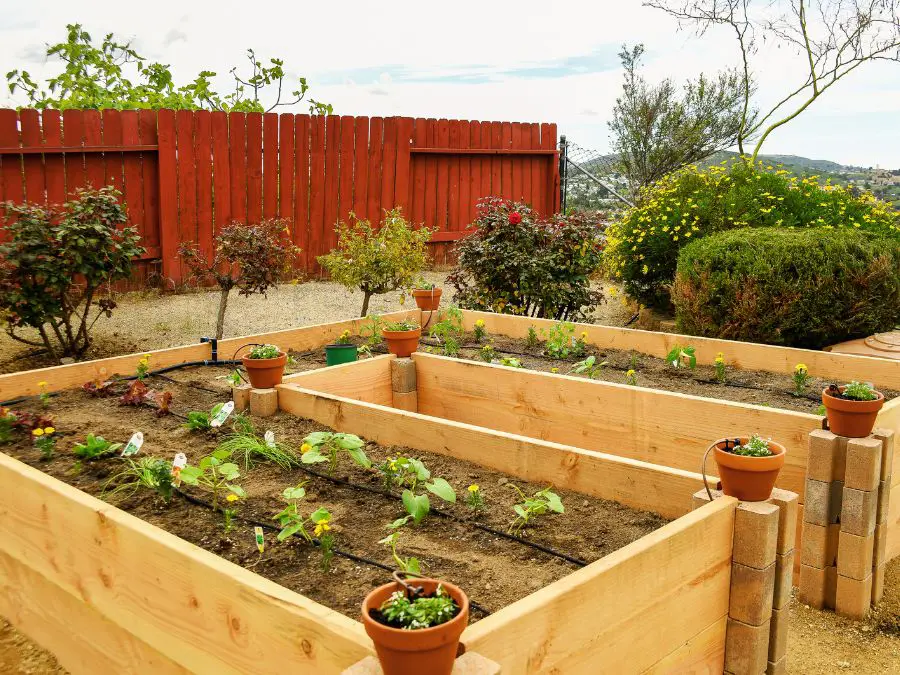
2. Provides Healthier Produce
Having multiple raised beds for your kitchen garden allows for easy implementation of crop rotation. This practice helps maintain soil health and prevents pests from overwintering in the soil. When pests hatch in the spring and find their food source has been moved to another bed, they will try to relocate, but most will perish along the way due to predators like birds.
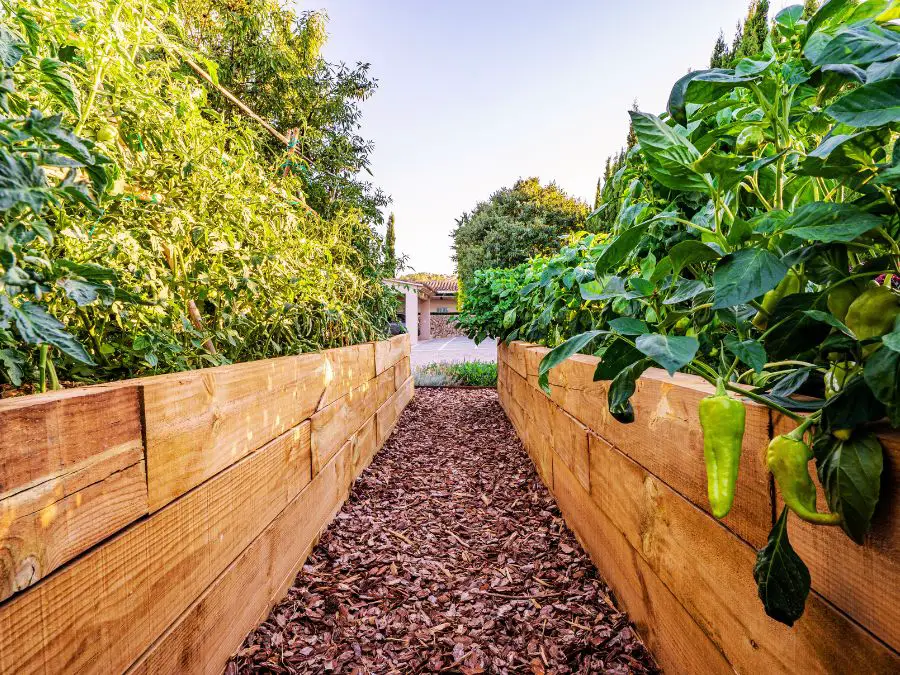
3. Allows Water Control
Raised beds facilitate good drainage and eliminate the risk of waterlogging, a common problem in traditional in-ground gardens. Irrigation is also more efficient and less wasteful in raised beds. A properly installed drip irrigation system directs water directly to the roots of plants, promoting their growth and saving money on watering costs.
4. Extend Season Growing
Raised bed soil warms faster than ground soil in the spring, enabling you to plant your spring crops early. Furthermore, by adding essential support, you may build low tunnels over your raised beds to prolong your season into late autumn or winter, based on your hardiness zone. Using your raised bed as a foundation, you may make a cold frame for winter planting using salvaged windows.
5. Protects Plants From Pests
Raised beds help safeguard crops from being consumed by animals. Voles and gophers cannot reach your root crops if you reinforce the bottom of the bed with a barrier, and a row cover may keep cabbage worms at bay.
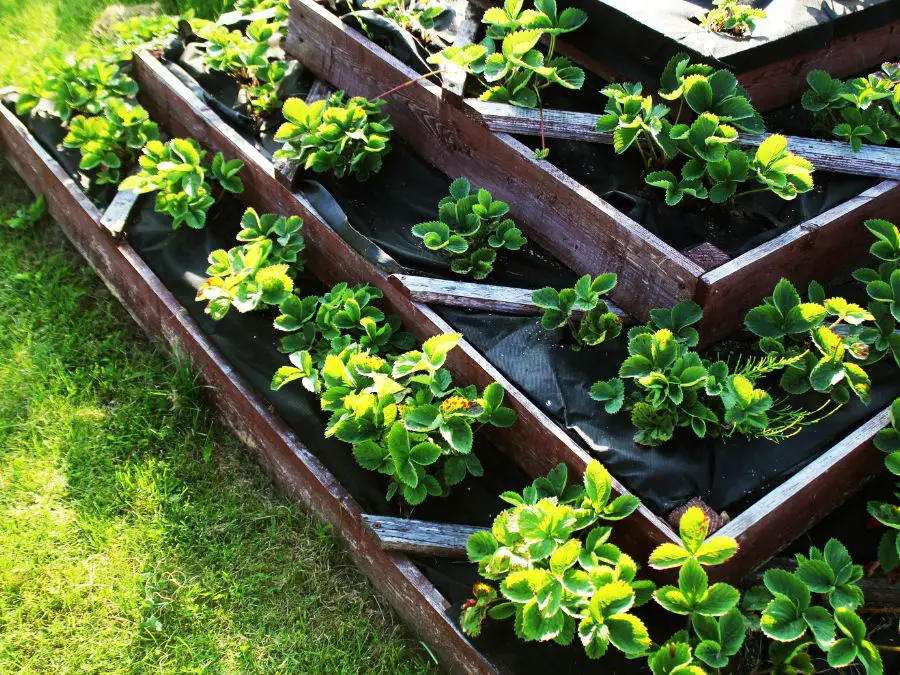
6. Maximize Harvests
By incorporating vertical supports, you can make the most of your raised bed garden space by planting intensively. For example, farmers interplant peas with lettuce and radishes along the bed’s edge. To further increase your garden’s productivity, you can use the Square Foot Gardening method, which involves dividing the raised bed into square-foot increments using a grid.
The technique, introduced by Mel Bartholomew, shows how many plants can fit in each square, such as one eggplant per square foot or 16 carrots per square. This approach eliminates guesswork and helps prevent overcrowding, maximizing planting and harvest in your limited space.
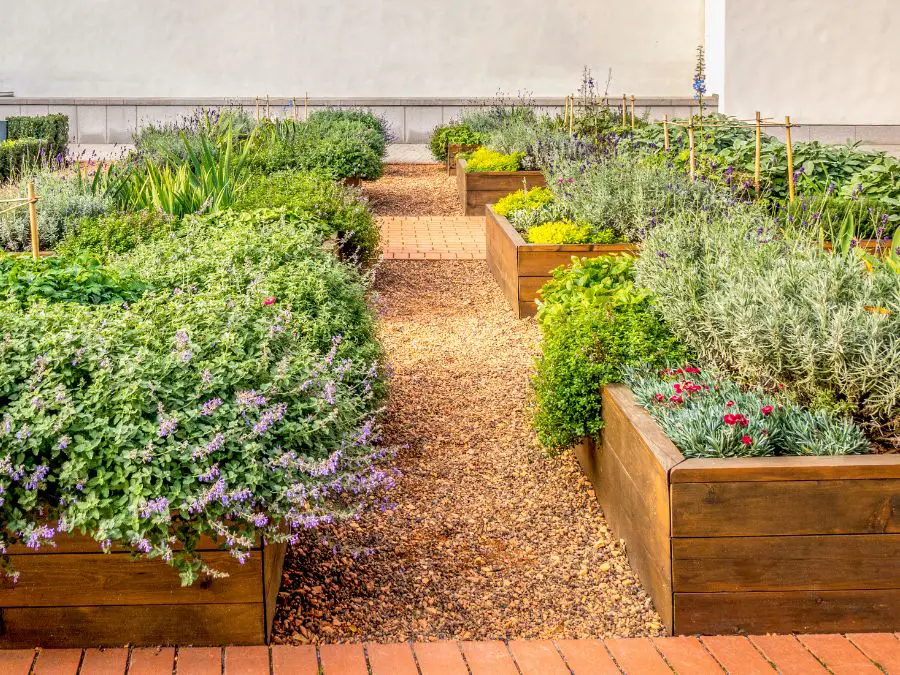
7. Gives Good Garden Aesthetics
Raised beds can add an attractive element to a garden. Raised beds can be designed artistically, keeping crops contained while adding visual appeal with edible flowers and pollinator plants. The raised beds can serve as a focal point in the garden. You can create a stunning, magazine-worthy edible garden by constructing multiple beds in a symmetrical or potager-inspired design, adding stone paths and an arbor.
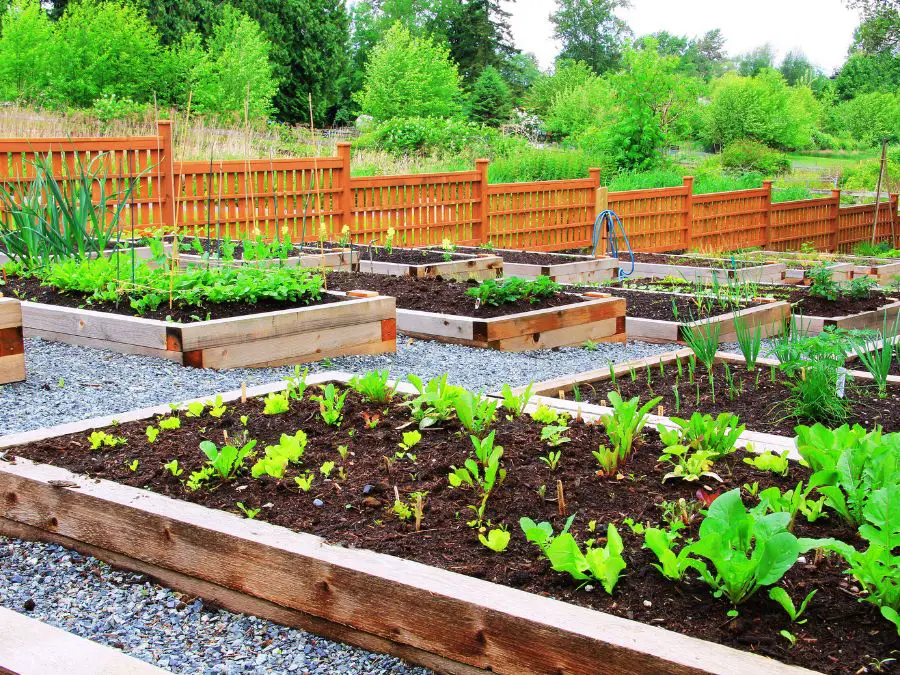
Frequently Asked Questions (FAQs)
Bottomline
In conclusion, raised beds designed for permaculture provide a method that is both environmentally friendly and productive for cultivating a wide range of plants while also adhering to permaculture ideals. These raised beds give the gardener more control over the soil, allow easier access to the plants, and enable them to rotate the crops.
In addition to these benefits, they help with drainage and watering, optimize space, and provide a visually beautiful structure. With permaculture-raised beds, you can cultivate a low-maintenance, self-sufficient garden that offers advantages to you and the environment. Thanks for reading!
Related: Urban Garden, Desert Permaculture, Permaculture Plants

